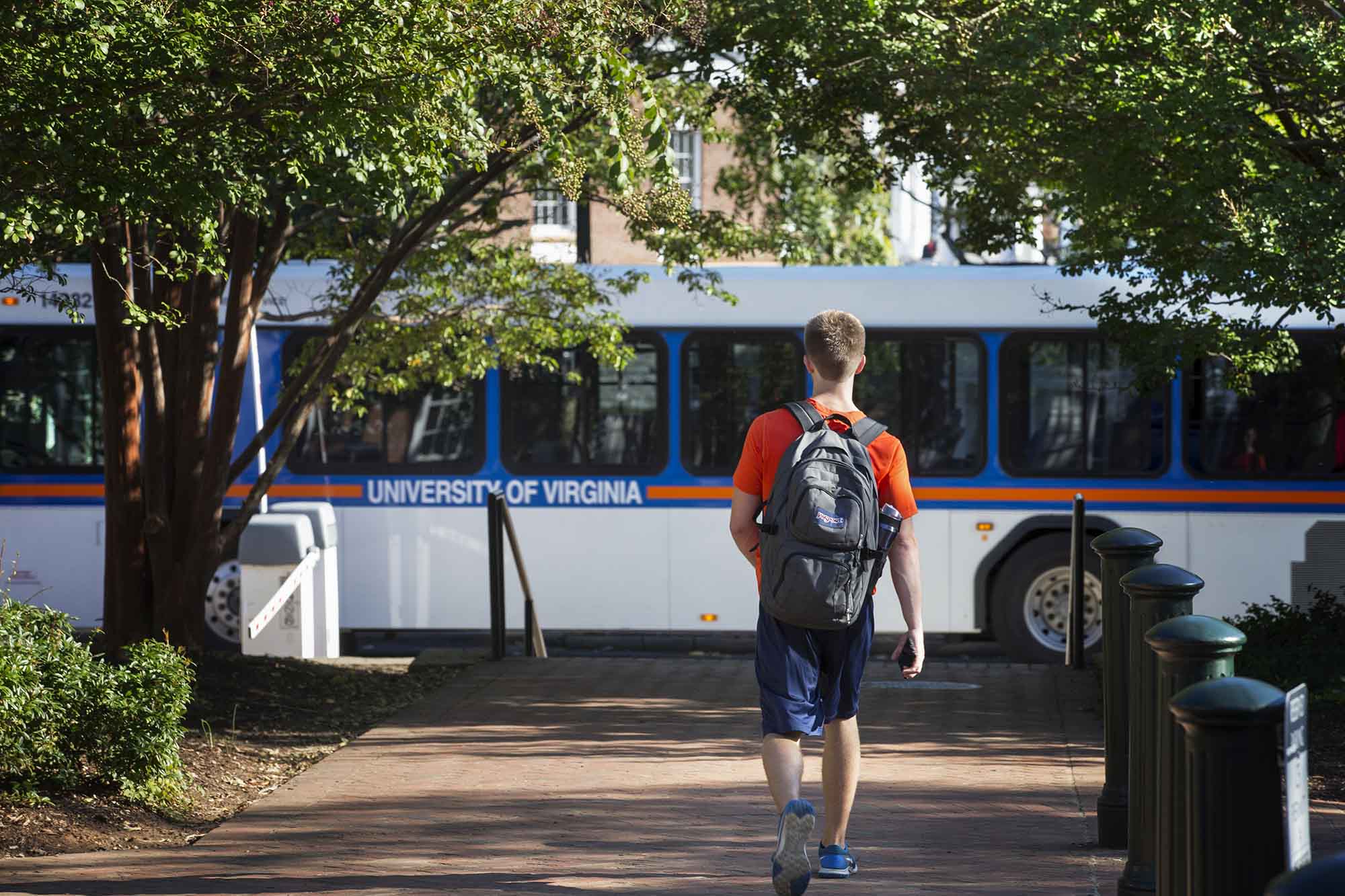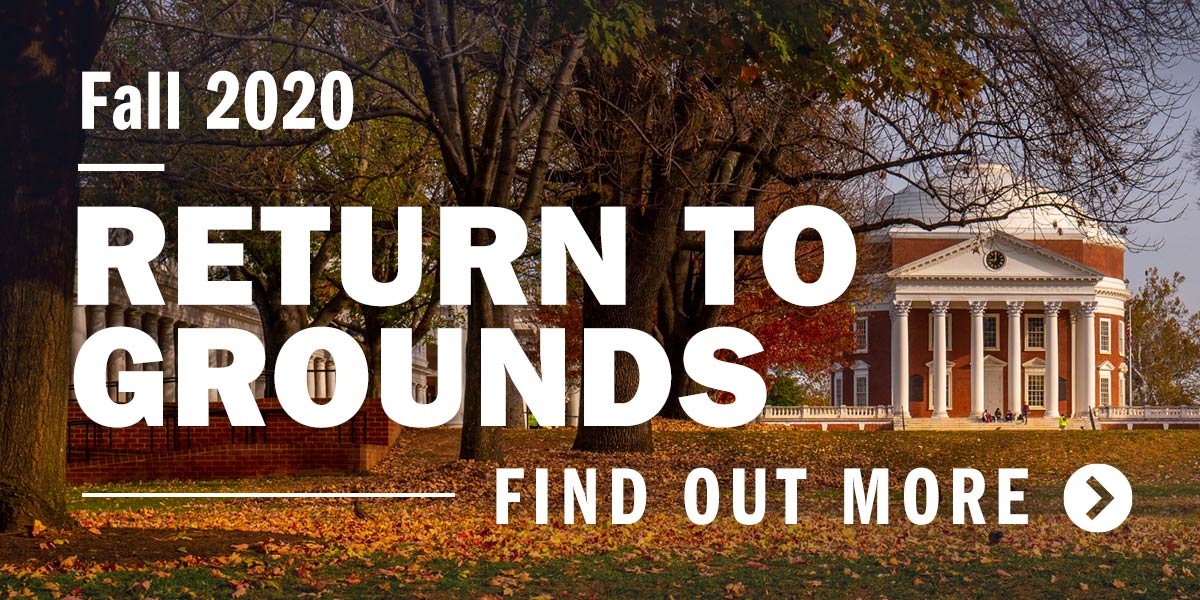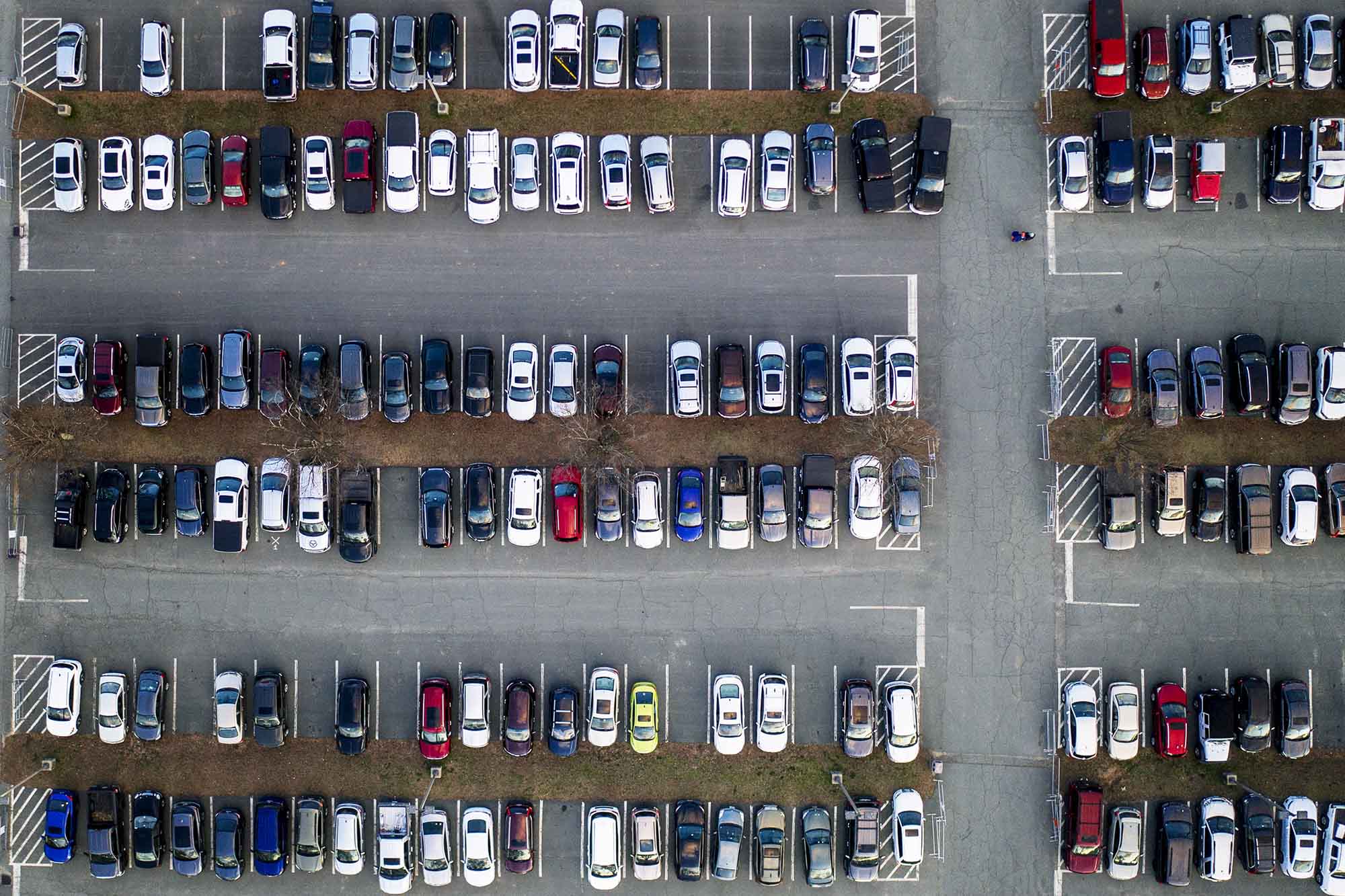For bus riders, University buses will carry a maximum of 20 passengers. Passengers will enter and exit through only the rear doors, with the front door reserved for passengers needing a boarding ramp or other assistance. Passengers will be required to wear a face covering and must maintain a safe physical distance from others.
“Passengers should avoid sitting next to or standing directly in front of other passengers,” White said. “The insides of the buses have been marked so passengers can easily identify proper spacing.”
The front of the buses will be cordoned off from passengers by a yellow chain to prevent passengers from getting too close to the driver.
“We do not have the capacity to run more buses, so we are changing the routes – most notably, removing University Transit System buses from McCormick Road,” White said. “The refigured routes emphasize transit-dependent trips, not convenience trips like riding for one or two stops on McCormick Road.”
Academic bus routes and Health System commuter routes are available here.
White said bus riders are responsible for maintaining physical distances at bus stops as well.
“Some key stops will be marked,” White said. “Some key loading areas, such as the morning and afternoon employee shuttles, will be staffed to assist with passengers boarding buses.”

University buses will carry a maximum of 20 passengers this fall and bus routes will be changed to emphasize transit-dependent trips. (Photo by Dan Addison, University Communications)
Bus riders will still be able to track how far a bus is from their stop through the Transloc mobile phone application and UTS will continue to use Twitter for transit updates.
Parking Changes
There will also be changes for those who drive to Grounds. Two large lots on West Grounds around Scott Stadium are being combined into a single larger lot, where parking spaces will continue to be sold annually, but will also be available through hourly, daily, weekly or monthly permits.
“The signs in the lots will change, as will the permits assigned,” White said. “The reason for this move is to create large parking space inventories that can be utilized more flexibly to meet people’s needs.”
As part of this flexibility, Parking and Transportation will use technology-based parking management for efficiency and contactless transactions, allowing drivers to purchase parking online via a mobile telephone application and park by license plate.
“For those who want to park by the day or the week, we will have new online options for people to purchase these virtual permits with their credit cards,” White said. “The customers supply their license plate numbers online, which will be fed into the license plate recognition system on our enforcement vehicles. People who use the meters and the Parkmobile application are already doing this.”
Increased teleworking, which was part of the parking master plan developed last year, has reduced parking and transit demand.
“We are focusing on ways to support teleworking through options such as daily and weekly parking,” White said. “There are other strategies in the master plan to explore in normal conditions, such as carpooling and long-distance transit, but those are on hold due to the pandemic.”

White said that parking rates are also being revamped.
“T4 was one of the high-priced lots on Grounds and E3 one of the mid-priced lots,” White said. “Both are side-by-side on Whitehead Road. E3 boundaries are being expanded to include T4 and the rate for the new resulting lot, which will be called E3, is mid-priced. Therefore, if you had a T4 permit, your rate is dropping, but if you had an E3 permit, then your rate is going up by the annual increase of $5 a month.”
Similar consolidation is being done with the W1 lot and the E1 lots located near Facilities Management, as well as the Y1 and Blue lot located near Carruthers Hall. In every case, the lower-priced lot defines the rate for 2020-21.
Parkers can also see a net reduction in their parking costs if daily and weekly permit options meet their needs better than purchasing an annual permit. Parking fees were suspended for June, July and half of August, so the annual net cost for most parking permit holders in 2020-21 will be less than 2019-20.
Greater accommodations are being made for those using other types of vehicles.
“We are also enhancing the University’s bicycle, moped and scooter infrastructure,” White said. “Removing UTS buses from McCormick Road will create fewer conflicts with walkers, bicyclists and those on scooters.”
White said the University will increase the number of bicycle racks and standardize and increase moped parking to yield more organized parking in less space.
The University Police Department offers online bicycle and scooter registration to students, faculty and staff. Those registering bicycles and scooters will receive a decal which may deter theft. The police will also have information on file that can assist in recovering a stolen vehicle.
The city’s e-scooter and electrical-assist bicycle program, with vender-supplied vehicles available on Grounds, will continue in the fall. White said riders need to remember to obey all applicable traffic regulations.
For detailed information, visit the Parking and Transportation website.
“We know that demand is going to change for annual parking permits and for transit, and that with reduced transit capacity, students, faculty and staff will need to walk more,” White said. “We are working to meet the changing needs.”
Media Contact
Article Information
July 23, 2020
/content/uva-reconfigures-transportation-options-face-covid-19

